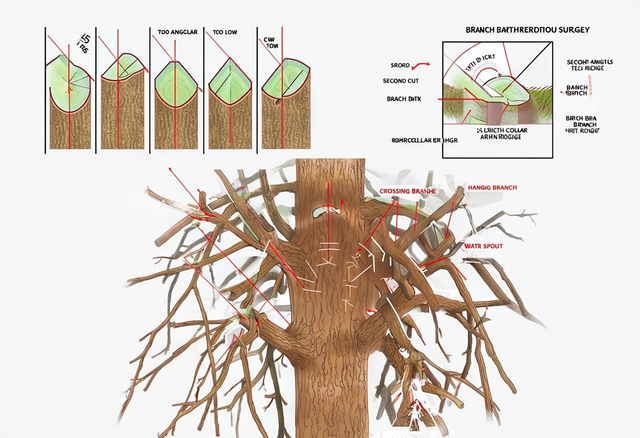
How and When to Prune Trees and Shrubs
Paula
- 0
- 11
Pruning is an essential part of tree and shrub maintenance, playing a crucial role in ensuring their health, structure, and overall appearance. It’s a combination of art and science, requiring knowledge of plant biology and pruning techniques to achieve the best results.
Understanding Growth Buds
- Apical Dominance: Plants grow primarily from the terminal or apex bud, which suppresses the growth of lateral buds. This dominance influences how branches grow and varies across species.
- Growth Patterns:
- Vertical limbs show strong apical dominance, resulting in vigorous growth near the terminal bud.
- Limbs at a 45° to 60° angle experience reduced apical dominance, promoting more lateral growth.
- Horizontal limbs may lose apical dominance altogether, often leading to the growth of water sprouts.
Removing Heavy Branches
- Cut from Below: To avoid damaging the bark, start by making an undercut when removing large branches.
- Top Cut: After undercutting, make a top cut outside the first cut to remove the branch.
- Branch Collar: Finish by cutting close to the branch collar. Avoid cutting into the collar as it’s essential for proper healing.
General Pruning Process
- Timing:
- Prune during dormancy in late winter or early spring for most trees and shrubs.
- Flowering shrubs should be pruned after they bloom to avoid cutting off the buds for next season.
- Evergreens and Fruit Trees:
- Prune evergreens in early spring to maintain their shape.
- Prune fruit trees to open up the crown for better light penetration, which boosts fruit production.
- Roses: Prune in early spring, cutting back to healthy, live wood just above an outward-facing bud.
Pruning Techniques
- Thinning: This involves removing entire shoots at their base. It encourages healthy growth by maintaining apical dominance and allows light to reach more parts of the plant.
- Water Sprouts and Suckers: These unwanted growths should be removed to conserve the plant’s energy and direct growth to the desired areas.
- Renewal Pruning: This technique helps older trees rejuvenate by improving air circulation and light penetration.
- Crotches and Angles: Prune branches that grow at narrow angles, as they are more prone to damage and less stable.
Healing and Regrowth
- Healing: Pruning triggers the plant’s healing process, beginning in the cambium layer. To speed up healing, make cuts close to the main branch without damaging the bark ridge or branch collar.
- Regrowth: Pruning stimulates regrowth near the cut. The more severe the pruning, the more the plant will regrow to balance the loss of top growth.
Summary
Pruning is not just about cutting back growth; it’s about understand


